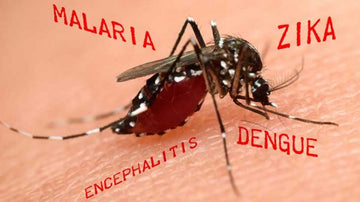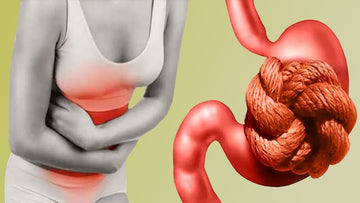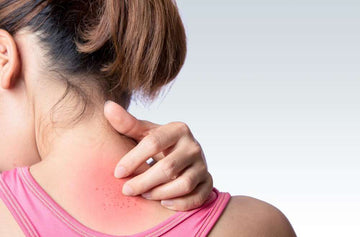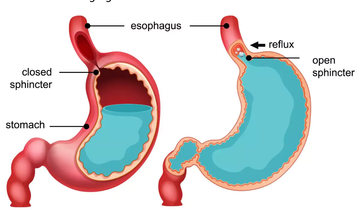Knowledge Base
What is Bilateral Sacroiliitis? How it can be treated in Ayurveda?
by Dr Vaid Ji on Jul 22, 2024
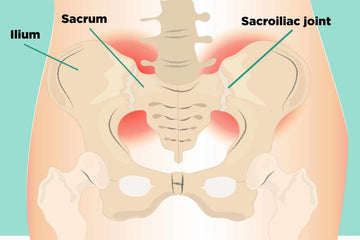
Bilateral Sacroiliitis
Bilateral Sacroiliitis is an inflammation of both sacroiliac (SI) joints, which connect the lower spine to the pelvis. This condition can cause pain in the lower back and buttocks, and sometimes down the legs.Main Causes of Bilateral Sacroiliitis:
1. Ankylosing Spondylitis: A type of arthritis that primarily affects the spine and SI joints, leading to inflammation and pain.2. Other Types of Spondyloarthritis: Conditions such as psoriatic arthritis, reactive arthritis, and inflammatory bowel disease-associated arthritis can involve the SI joints.
3. Infection: Bacterial infections can cause inflammation of the SI joints.
4. Trauma: Injury to the lower back or pelvis.
5. Pregnancy: Hormonal changes and the added weight can strain the SI joints.
6. Osteoarthritis: Degeneration of the joints can lead to inflammation.
7. Gout: The buildup of uric acid crystals in the joints can cause inflammation.
8. Autoimmune Disorders: Conditions like rheumatoid arthritis and lupus can involve the SI joints.
Ayurvedic Treatment for Bilateral Sacroiliitis:
Ayurveda considers joint inflammation a result of an imbalance in Vata and Pitta doshas. The treatment focuses on reducing inflammation, relieving pain, and restoring the balance of doshas.Dr.Vaid Ji Nerve up tablet is a herbo-mineral tablet and is purely ayurvedic formulation. CAC Nerve up tablets help in balancing the vata doshas. It reduces kapha dosha, and acts as nervine stimulant. It shows effective results in improving the central nervous system. It contains natural ingredients like shudha kuchala, shudha shilajeet, abhrak , praval pishti, shankh etc. These contains natural vatahar properties and helps in curing vata diseases.

1. Panchakarma:
Virechana (Purgation): To cleanse the body of toxins (ama) and balance Pitta dosha.
Basti (Medicated Enemas): To pacify Vata dosha and relieve inflammation.
2. Herbal Remedies:
Ashwagandha (Withania somnifera): Reduces inflammation and strengthens the muscles.
Guggulu (Commiphora mukul): Anti-inflammatory properties help reduce joint pain and swelling.
Shallaki (Boswellia serrata): Known for its anti-inflammatory effects.
Turmeric (Curcuma longa): Contains curcumin, which has strong anti-inflammatory properties.
Ginger (Zingiber officinale): Reduces inflammation and pain.
3. Abhyanga (Oil Massage):
Regular massages with medicated oils like Mahanarayan oil, Kottamchukkadi oil, or Sahacharadi oil to reduce pain and stiffness.
4. Swedana (Sudation Therapy):
Use of steam or hot packs to relieve pain and improve circulation in the affected area.
5. Dietary Recommendations:
Anti-Inflammatory Diet: Include foods that reduce inflammation, such as leafy greens, berries, nuts, seeds, and fatty fish.
Avoid: Processed foods, excessive sugar, red meat, and foods that aggravate Vata and Pitta doshas.
6. Yoga and Exercise:
Gentle yoga poses and stretching exercises to improve flexibility and strengthen the muscles around the SI joints.
Low-impact exercises such as walking, swimming, or cycling.
7. Lifestyle Modifications:
Maintaining good posture to reduce strain on the SI joints.
Avoiding prolonged sitting or standing.
Using supportive footwear and avoiding high heels.
Precautions:
1. Avoid Strain: Avoid activities that put excessive strain on the SI joints, such as heavy lifting or high-impact exercises.2. Maintain a Healthy Weight: Reducing excess weight can help alleviate pressure on the SI joints.
3. Posture Correction: Ensure proper posture when sitting, standing, and sleeping to reduce stress on the joints.
4. Stay Hydrated: Drink plenty of water to keep the joints lubricated.
5. Regular Check-ups: Regularly consult with a healthcare provider or Ayurvedic practitioner to monitor the condition and adjust treatment as necessary.
Ayurvedic treatments aim to provide holistic relief by addressing the root causes of inflammation and pain, promoting overall joint health, and preventing recurrence. Working with a qualified Ayurvedic practitioner can help tailor the treatment plan to individual needs.

